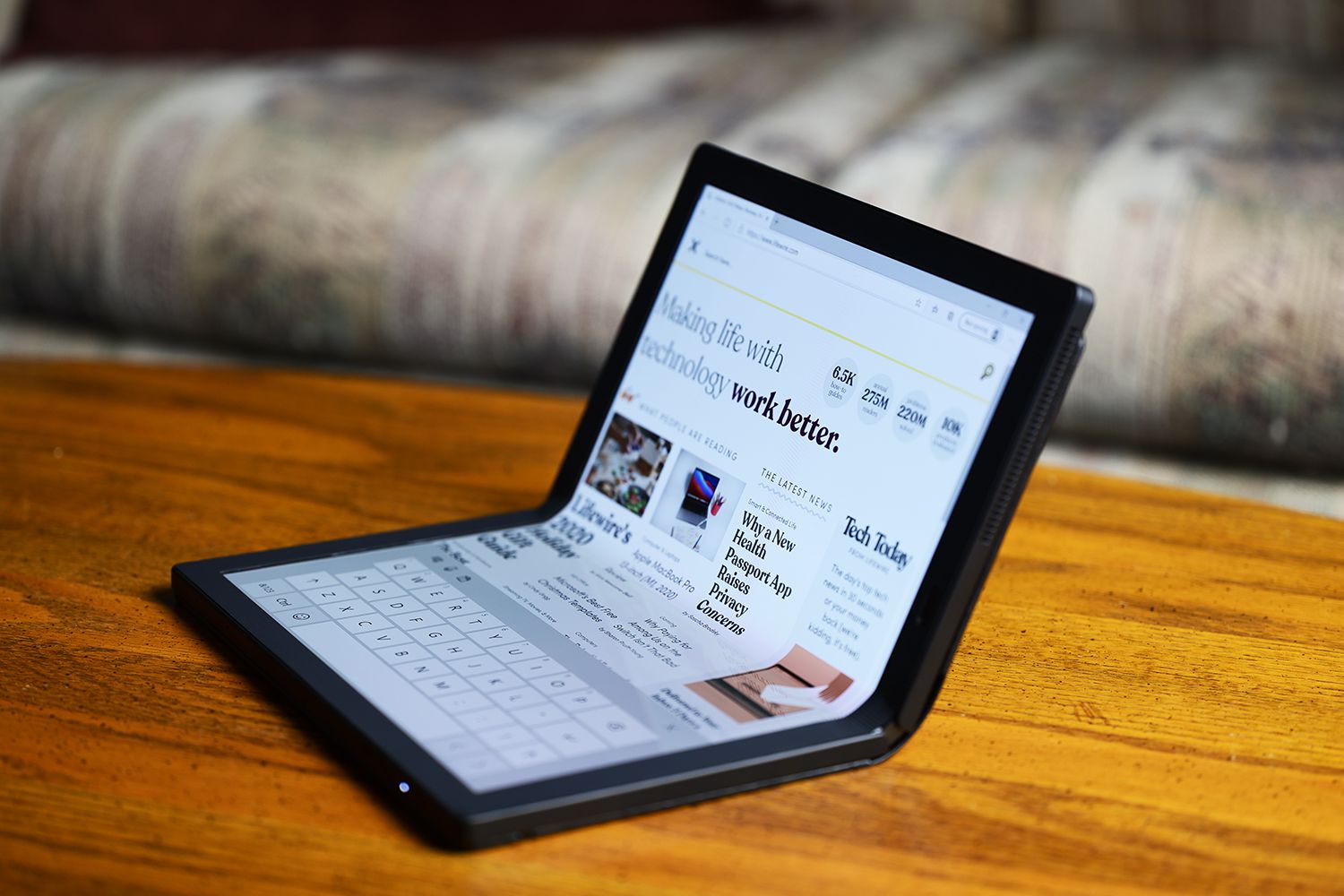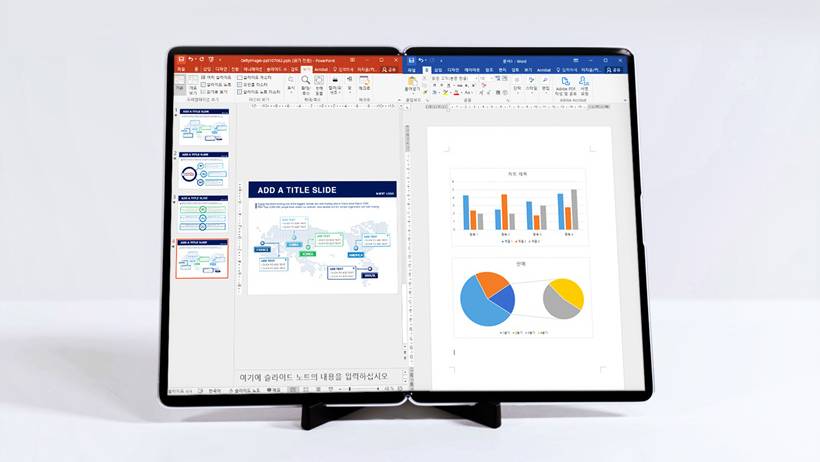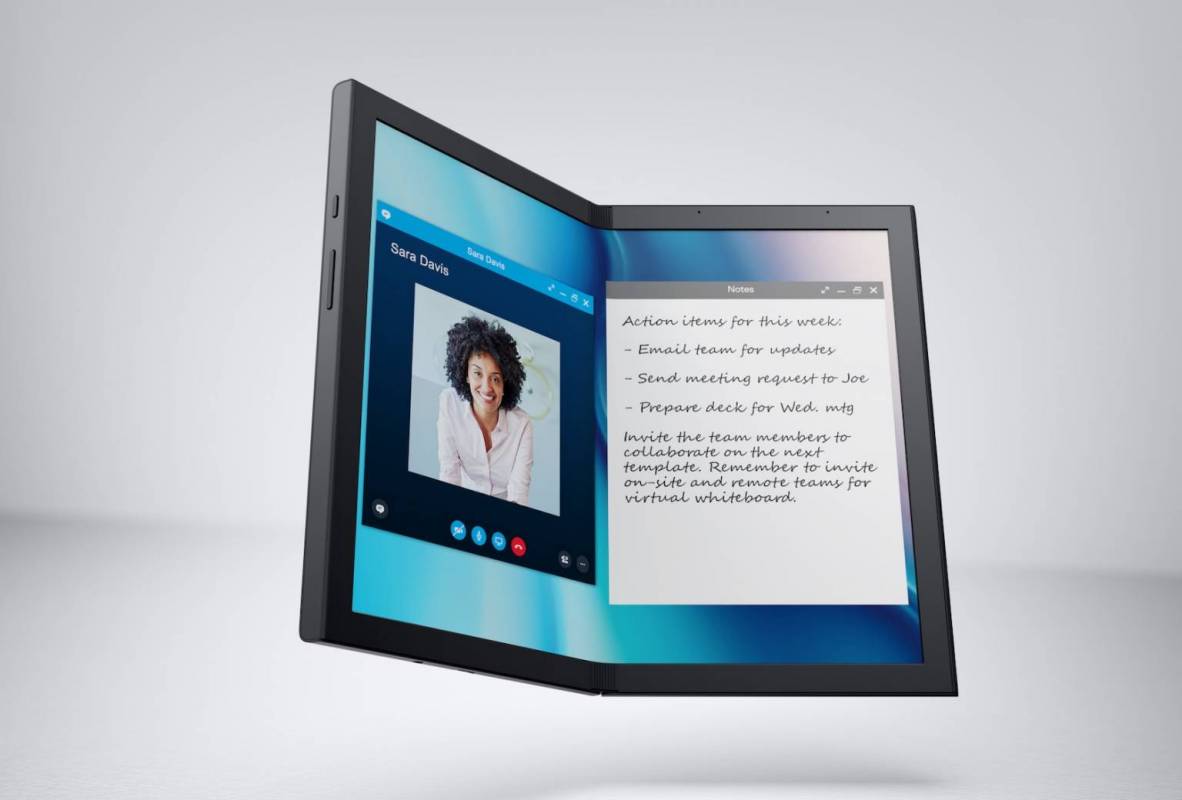working devices, concepts and technology perspectives

I don’t really follow the evolution of foldable / flexible screens. But now there are surprisingly many smartphones with such displays. More recently, these were, rather, concepts and prototypes, and now different manufacturers have put on the market a bunch of new types of models at once.
Samsung Corporation has been particularly successful in this, but there are other manufacturers as well – I somehow caught my eye even the modern incarnation of the Motorola Razr. But let’s talk about smartphones next time. For now, let’s talk about laptops with foldable displays – these also exist. True, there are fewer laptop models with a new type of screen than smartphones, but they are still there. Some are already on sale, others are in the form of engineering samples, and still others are just a concept. Let’s take a look at what has appeared on the market there and what significance the new direction will have on the development of the industry.
Lenovo Fold X1
This laptop was announced at the beginning of last year, but it reached the Russian Federation only now. More precisely, official sales have now begun: those who wanted and could purchase this miracle of engineering have already bought it. I must say that the cost of a laptop from Lenovo is not at all small – if you want a flexible screen, get ready to spend 330,000 rubles.
By the way, initially this device was supposed to come with a special version of the “dozen” – Windows 10X. But Microsoft closed this area, so the developers from Lenovo had to come up with ways to combine the ready-made engineering sample Lenovo Fold X1 with the usual Windows 10. Due to the fact that X never appeared, the alignment work was carried out in an emergency, and some of the promised functions have not (yet) been finalized.
If you open the device, we get a tablet with a diagonal of 13 inches and a thickness of 11.5 mm. The screen is OLED, unfolded there are no folds or other problems. In laptop mode, part of the screen serves, in fact, as a screen, the second part, if necessary, can be converted into a keyboard. But there is also a physical keyboard designed specifically for this model.

Here
devices:
The device is not the most powerful, the developers made a number of concessions in terms of performance for the sake of an unusual form factor. It is difficult to recommend such a device as a “workhorse”, but for fans of unusual devices it is what you need. If you have 330 thousand rubles to buy it.
Intel Horseshoe Bend
This laptop cannot be found on sale, but there is already a completely working engineering sample, which was given to test a couple of representatives of major media outlets. And the laptop, by the way, differs from the previous “relative”, and very much. First of all, the screen size – here it is immediately 17.3 inches.
The device folds into a laptop form factor, and after that you can use either the software keyboard or the physical keyboard that comes with the device. The screen, as in the previous case, is OLED. If you do not use a physical keyboard, then working on such a device looks, of course, futuristic.

The device is based on the 10nm Tiger Lake architecture. There is no active cooling here, which, in general, is not surprising. The device was originally planned to be released on Windows 10X, but, as in the case of Lenovo, the developers had to work with what is – the usual Windows 10.
Laptops with foldable screens are a very interesting topic, but we have other articles, check it out – we talk about:
→ Small “raspberries” in a large data center
→ Dynamic UPSs in data centers: how we installed Piller CPM300 double conversion
→ Disassembly of a rare beast from Nvidia – DGX A100
By the way, despite its size, the device looks a little more elegant than a laptop from Lenovo. On the other hand, this is an engineering sample, the gadget has not yet gone on sale, and it is not known whether it will. But Lenovo has released a working device, and you can buy it.
But it may still change – about a year ago there was a publication, in which it was reported about the joint efforts of Samsung, Intel and Microsoft to bring such devices to the free sale.
Concept Ori by Dell

Another foldable / flexible laptop concept from a large company – this time from Dell, unveiled a year ago. Whether it will go on sale or not is not yet clear.
It is a small device with a screen diagonal of only 13 inches – like a laptop from Lenovo. At the same time, a physical keyboard is not provided – the company representatives believe that such laptops do an excellent job with their tasks using the touch screen keyboard.

There is also a problem with Windows X: this laptop, like all previous models, was originally adapted for a specialized version of the OS from Microsoft. There is no operating system, and the concept remains a concept for now. It is not yet clear if the developers will develop the project. But, be that as it may, this version of a folding laptop is very similar to the version from Lenovo.
Samsung Galaxy Book

Finally, we will mention the company Samsung – who does not like it to create laptops with foldable screens. The corporation has a mature technology for phones, so it does not need to create everything from scratch, like many other companies.
And the concept in question began to be prepared relatively recently. The project has not gone on the back burner, and the likelihood that the project will be implemented is quite high.

As for the characteristics, here we also have a 17-inch display, the South Korean corporation decided not to waste time on trifles. The full model name is Samsung Galaxy Book Fold 17.
It’s too early to talk about the characteristics. It is known that the device will be based on the architecture of the new processor from Samsung and AMD. We are talking about the generation of Exynos chips made using 5 nm technology.
The company showed the concept at the Korea Display Exhibition. She also talked about the Under Panel Camera (UPC) technology, which will be used to create a laptop with a folding screen. This technology was first introduced with the Galaxy Z Fold 3 phone.
As far as we know, the announcement of the laptop is scheduled for the first quarter of 2022. If the MWC 2022 tech exhibition takes place next year, then, most likely, this laptop will be presented there.
A real tool or a toy?
The creators of laptops with folding screens declare three main advantages of such devices over other models of laptops and / or tablets.
The ability to quickly switch to tablet mode and back.
According to the creators of devices with flexible screens, these devices switch to tablet mode and back in seconds. With a powerful tablet in hand, you can hold presentations, read books, draw, etc.
Just a laptop or just a tablet, no matter how convenient they are, cannot replace each other. In addition, the user can either share the functionality of the two halves of the screen, or combine them, turning them into a single system.
If the device is small, say, 13 inches, and not 17, then it can be used as a working tool in data centers, production sites, etc. Unfolded, read all the necessary data, folded.
Dynamic touchpad
The entire surface of the second half of the screen can be used as a touchpad. The user can easily drag widgets, windows, applications from bottom to top and back. In general, full interactivity.
Multitasking

The halves of the screen can be divided or combined into a single system. For example, on one half you can place a project that is being discussed in the company, and on the other you can add your comments.
Opinions are divided
Companies that create concepts and real-world devices of this kind offer a wide variety of use cases. But it is clear that laptops with folding screens are very specific gadgets that, most likely, not everyone needs.
There is an opinion that they are not needed at all, and the developers suck the use cases out of hand. There is a technology for creating flexible screens, which means that they began to implement it not only in phones, but also in laptops. At the same time, the developers claim that systems with foldable displays will replace both conventional laptops and tablets after a while.
But exactly the same thing was told by the creators of all sorts of “transformers”, 2-in-1 systems.
Let’s discuss the relevance of the technology in the comments. Do you think such systems deserve the right to life or is it a completely artificial idea?






